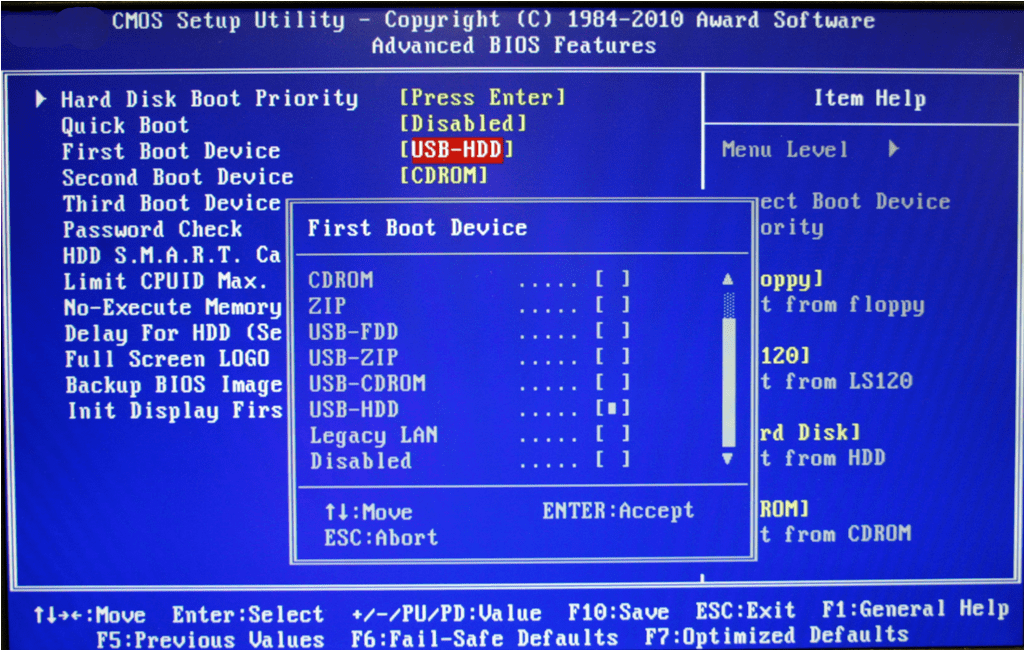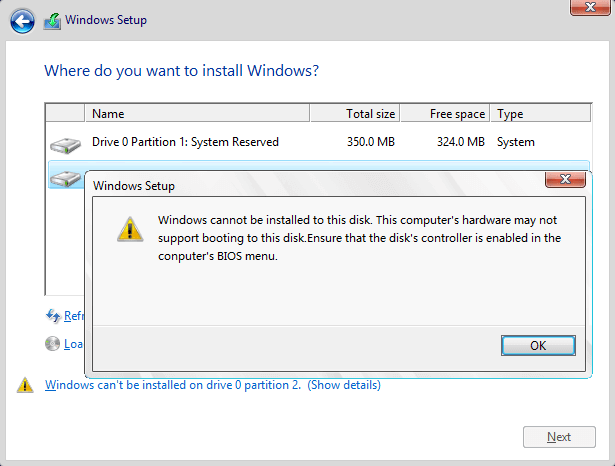

- #HOW TO INSTALL WINDOWS ON HARD DRIVE NOT FROM BIOS HOW TO#
- #HOW TO INSTALL WINDOWS ON HARD DRIVE NOT FROM BIOS WINDOWS 10#
- #HOW TO INSTALL WINDOWS ON HARD DRIVE NOT FROM BIOS ISO#
Right-click on the local disk that contains bad sectors and choose "Properties". Step 1: Open a Windows File Explorer by clicking "Win + E". Microsoft has introduced a Drive Check tool into Windows for fixing bad sectors on hard drive. Part 3: Check drive for errors using drive tools in Properties And you can fix bad sectors on hard drive with it. Step 3: If any issue were found, such as bad sector, it would be listed with an option to scan the drive. You can check the current health status of your drives. Step 2: Click on the "Maintenance" option and then locate to the "Drive status" area. Step 1: Go to your Control Panel and choose "Security and Maintenance" to open it. So, you can figure out the problems with hardware and software, like bad sectors.
#HOW TO INSTALL WINDOWS ON HARD DRIVE NOT FROM BIOS WINDOWS 10#
Windows 10 uses the Security and Maintenance screen to tell you the issues that pertain to your hard drive’s health. Part 2: Check drive status in Security and Maintenance You will also like reading: Backup iPhone to external hard drive. Step 3: When it finished, restart your computer and the hard drive should be accessible. The /F parameter means to repair hard drive Windows 10, the /X parameter forces to dismount before check, and the /R is used to locate the bad sectors and recover readable data. Step 2: Type "chkdsk /F /X /R", you can press the "Enter" key to trigger the process. That will run a command prompt window as administrator. Step 1: Hold down "Win + X" to go to the power users menu, and then click "A" on your keyboard. It is the built-in hard drive repair tool on Windows operating system. If you discover that there are bad sectors, the first thing you can try to repair Bad Sectors on hard drive Windows 10 is chkdsk. Part 1: Check and fix bad sectors on hard drive with chkdsk

And bad sectors may occur on both traditional HDD and modern SSD. It won’t respond to read or write requests.
#HOW TO INSTALL WINDOWS ON HARD DRIVE NOT FROM BIOS HOW TO#
The WIM file for WINDOWS 1 are TOO LARGE for FAT32.When you done a disk check for hard drive errors, because I got a bad hard drive error message said that bad sectors need to be fixed immediately, I want to know how to fix bad sectors on hard drive, please help.” A bad sector on a disk is simply a tiny cluster of storage space. You can use exFAT or NTFS on newer models, however older systems are NOT able to boot from external boot media using NTFS.įor these models it cannot be exfat and larger than 32 gigs or usb 3.X drive. This means that past 1803 the WIM file is TOO LARGE for a FAT32 flash drive. This means that you cannot copy a file that is larger than 4 GB to any plain-FAT volume. The 4 GB barrier is a hard limit of FAT32: the file system uses a 32-bit field to store the file size in bytes, and 2^32 bytes = 4 GB (actually, the real limit is 4 GB minus one byte, or 4,294,967,295 bytes, because you can have files of zero length).
#HOW TO INSTALL WINDOWS ON HARD DRIVE NOT FROM BIOS ISO#
It also means that ISO must be burned to DUAL Layer DVD media because the base installer is no longer smaller than 4.7 gigs. This is why I recommend using USB 2.0 optical drive and OEM system builder DVD for reinstall. The media must be at least 16 gigs and not larger than 32 gigs and USB 2.0.


 0 kommentar(er)
0 kommentar(er)
